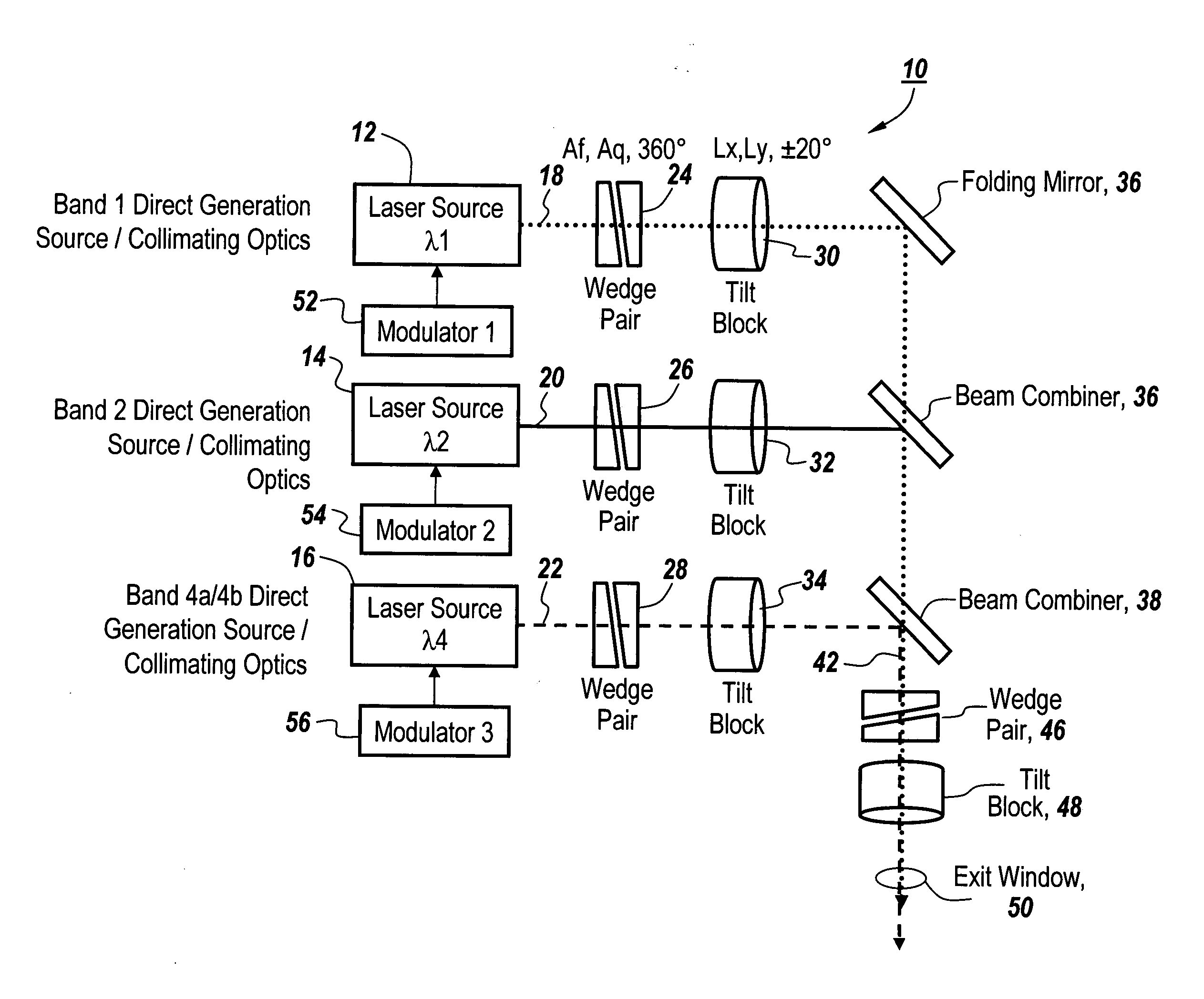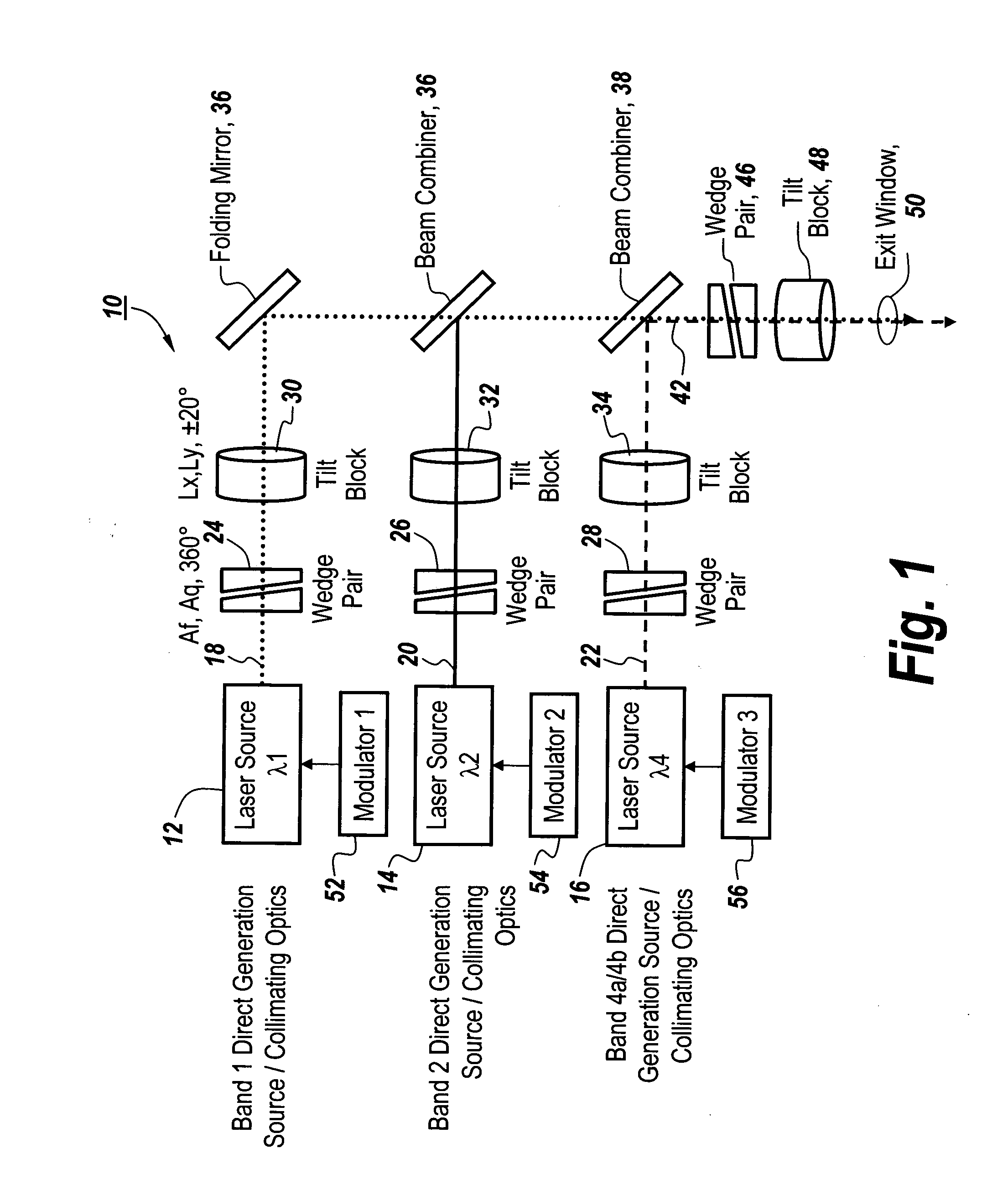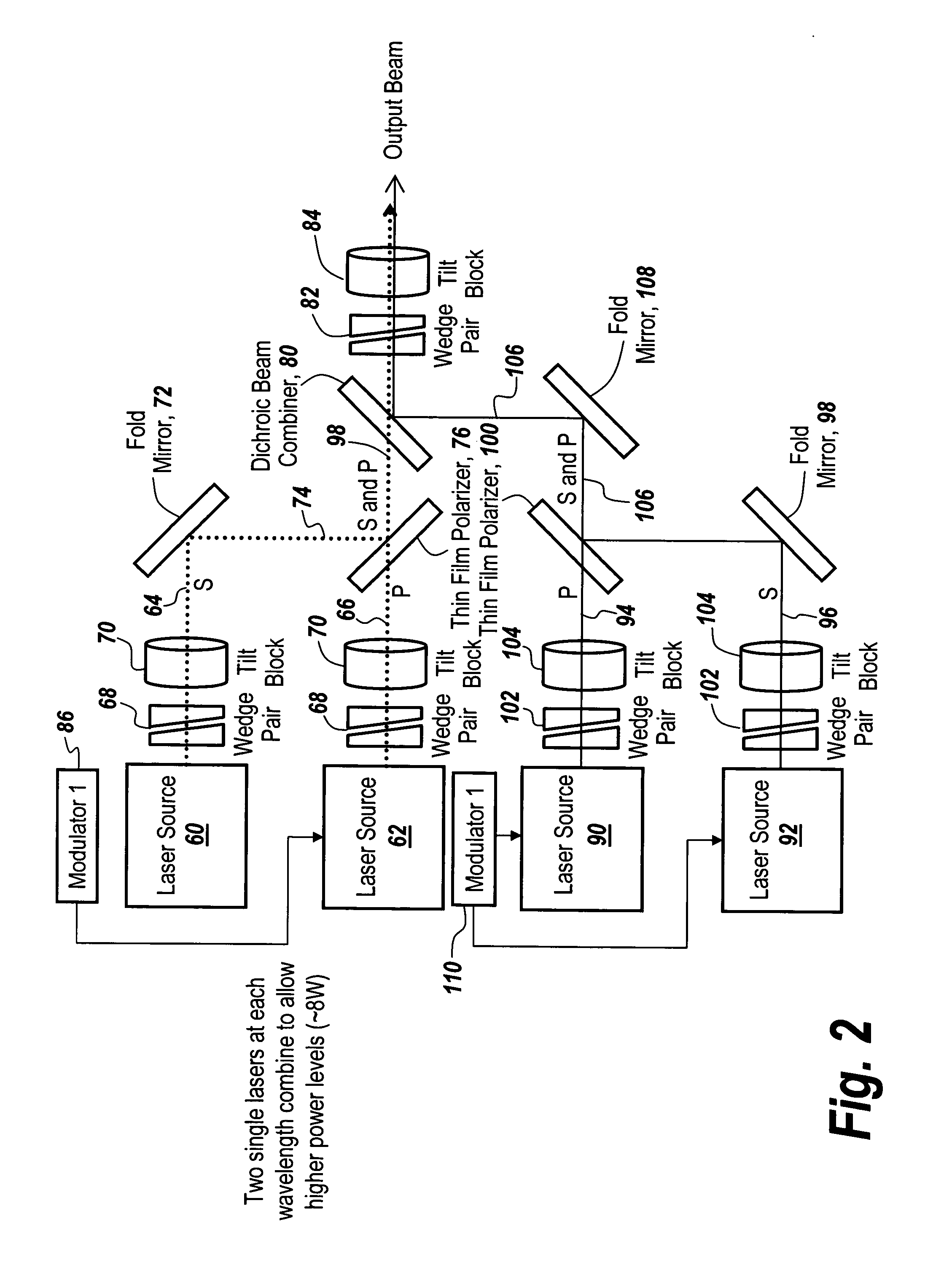Direct generation semiconductor IRCM laser system
a laser system and semiconductor technology, applied in the field of direct generation semiconductor ircm lasers, can solve the problems of reducing the efficiency of the wall plug or total efficiency, the inability to make optimal one-time jam code generated for a particular mid-infrared band, and the system is less reliable, so as to eliminate sequencing or segmentation, reduce the cost, and the effect of time-consuming
- Summary
- Abstract
- Description
- Claims
- Application Information
AI Technical Summary
Benefits of technology
Problems solved by technology
Method used
Image
Examples
Embodiment Construction
[0035]Referring now to FIG. 1, in a direct generation semiconductor DIRCM laser system 10 a number of direct generation laser sources 12, 14 and 16 utilize collimated optics to provide beams 18, 20 and 22 through respective wedge pairs 24, 26 and 28. In one embodiment, the wedge pairs are Risley prisms. The outputs from wedge pairs 24, 26 and 28 are respectively coupled through tilt blocks 30, 32 and 34 and impinge respectively on a folding mirror 36, a beam combiner 38 and another beam combiner 40. The result is an output beam 42 with jam code applied that passes through another wedge pair 46 and another tilt block 48 and out through an exit window 50.
[0036]Each of the laser sources 12, 14 and 16 is provided with independent jam code modulation by respective modulators 52, 54 and 56. Each of the modulators independently and asynchronously modulates the output of the associated laser source such that the modulation on laser beams 18, 20 and 22 may be specifically tailored for a part...
PUM
 Login to View More
Login to View More Abstract
Description
Claims
Application Information
 Login to View More
Login to View More - R&D
- Intellectual Property
- Life Sciences
- Materials
- Tech Scout
- Unparalleled Data Quality
- Higher Quality Content
- 60% Fewer Hallucinations
Browse by: Latest US Patents, China's latest patents, Technical Efficacy Thesaurus, Application Domain, Technology Topic, Popular Technical Reports.
© 2025 PatSnap. All rights reserved.Legal|Privacy policy|Modern Slavery Act Transparency Statement|Sitemap|About US| Contact US: help@patsnap.com



